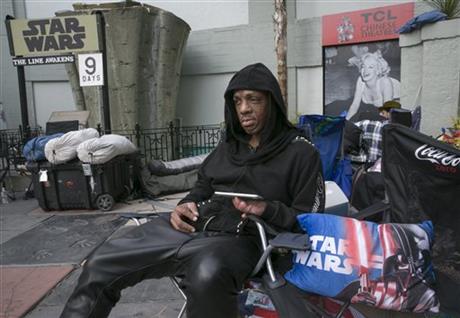
By RYAN NAKASHIMA
Movies make more money when exactly half their casts are non-white, according to an annual analysis released Thursday that shows an increasing demand for diversity in film.
In previous years, movies did better at the box office if two or three of the top eight billed actors were non-white. The latest review, examining 2014 ticket sales, shows four of eight is the magic number, UCLA’s Ralph J. Bunche Center for African American Studies found.
“When we look at film, we see an even stronger relationship between cast diversity and box office,” said Darnell Hunt, director of the center at the University of California, Los Angeles.
“These aren’t momentary glitches. It’s the handwriting on the wall,” Hunt said, suggesting that the numbers show how profoundly out of touch the motion picture academy is when giving Oscars only to white actors.
Sponsored Links
9 Office 365 Cloud Myths (eBook)
Microsoft
Don’t Buy Any of These 15 Cars!
Forbes
The Bunche Center has examined roughly the top 200 films of each of the last few years and looked at the median global haul at each grouping of diversity — from no non-white actors to one, two, three, four, and then five or more among the top eight roles.
The best-performing group — movies in which half the main cast was non-white — had a median ticket revenue of $122.2 million. That’s more than double the $52.6 million median haul for films with no non-white actors in the top eight. Films where more than half the actors in the main cast were non-white also had a median of just $52.4 million.
The study points to “Lucy,” a science-fiction film that gave Morgan Freeman, Min-sik Choi and Amr Waked prominent roles alongside Scarlett Johansson and grossed $444 million worldwide according to IMDb.com, and “Annie,” in which Jamie Foxx played the billionaire and Quvenzhane Wallis the orphan, with Cameron Diaz in a supporting role. That multiethnic update of the classic musical made $119 million, according to IMDB.com.
Not every top-performing film has a hugely diverse cast — you have to scan down to the eighth listed actor to find Chinese actress Bingbing Li in 2014’s top-selling movie, “Transformers: Age of Extinction,” which made $1.1 billion worldwide.
Overseas audiences — led by fast-growing China — are also making up an increasing share of the global box office, reaching 72 percent of the $36.4 billion in 2014, up from 66 percent just four years earlier. That trend has given rise to direct appeals to Chinese audiences, with filmmakers inserting scenes with Chinese actors in a handful of recent films, including “Mission Impossible: Rogue Nation” and “Iron Man 3.”
It stands to reason why a modestly diverse cast pays off. In the U.S., Caucasians remained the largest moviegoing demographic in 2014 at 54 percent, according to the Motion Picture Association of America. But U.S. Hispanic and Asian audiences punch above their weight, making up a greater proportion of frequent moviegoers who see movies at least once a month than their percentage of the population overall.
And sometimes diverse audiences are core. For the top movie that year, “Transformers: Age of Extinction,” about 60 percent of the audience was non-white.
The motion picture academy behind the Oscars has moved swiftly to tamp down an uproar over its all-white acting nominee pool for the second year running. Academy president Cheryl Boone Isaacs has taken steps to diversify the membership of the overwhelmingly white and male institution.
Sony Pictures CEO Michael Lynton said recently at the Code Media conference that the move was a “positive step” to align the awards ceremony with the reality that diversity can be good for business.
“You only need to look at a film franchise like ‘Fast and Furious’ to see what an enormous success that movie has been and in large part I would argue, it’s because of the diversity of the cast,” he said. “I think the Academy has reacted very, very quickly and positively to what I think was a very, extremely unfortunate situation this year.”
___
Online:
See what regular people think of diversity at the Oscars: https://youtu.be/Fo3dvuZizB4
___



